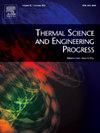Advancing pyrolysis of sewage sludge: Bibliometrics analysis, life cycle assessment, and circular economy insights
IF 5.1
3区 工程技术
Q2 ENERGY & FUELS
引用次数: 0
Abstract
Pyrolysis technology holds great potential for sustainable sewage sludge treatment due to its ability to recover energy, tackle the environmental challenges, and convert by-products into valuable resources. However, a comprehensive understanding of its research progression, sustainability implications, and policy relevance remains limited. This study offers a comprehensive analysis of sewage sludge (SS) pyrolysis research, integrating sustainability through life cycle assessment (LCA) and circular economy principles. Using Scopus and VOSviewer, it highlights significant growth in research, with publications rising in this decade, reflecting increasing global interest driven by environmental and technological imperatives. China dominates the field with 693 publications and extensive international collaborations, followed by the United States and Australia. Key journals play pivotal roles in disseminating findings, while interdisciplinary contributions span environmental science, energy, and chemical engineering. Keyword analysis reveals emerging trends such as circular economy, LCA, and carbon sequestration highlighting a growing focus on sustainable practices. LCA studies show that advanced pyrolysis technologies reduce greenhouse gas emissions, and align with United Nations Sustainable Development Goals. Circular economy analyses underscore the economic viability of co-pyrolysis, alongside substantial energy recovery and bio-oil market potential. Additionally, this study explores the key technological challenges and mitigation strategies crucial for optimizing SS pyrolysis systems and advancing future research. These findings underscore the adaptability of SS pyrolysis for waste valorization and its role in addressing environmental challenges. This analysis provides valuable insights for advancing research, informing policy, and optimizing industrial practices, highlighting SS pyrolysis as a critical technology for sustainable waste management and resource recovery.
推进污泥热解:文献计量学分析、生命周期评估和循环经济见解
热解技术具有回收能源、解决环境挑战、将副产品转化为宝贵资源的能力,在污泥可持续处理方面具有很大的潜力。然而,对其研究进展、可持续性影响和政策相关性的全面理解仍然有限。本研究通过生命周期评价(LCA)和循环经济原理对污泥热解研究进行了综合分析。使用Scopus和VOSviewer,它突出了研究的显着增长,在这十年中出版物不断增加,反映了由环境和技术需求驱动的全球兴趣日益增加。中国在该领域占据主导地位,发表了693篇论文,并开展了广泛的国际合作,其次是美国和澳大利亚。关键期刊在传播研究成果方面发挥着关键作用,而跨学科的贡献跨越了环境科学、能源和化学工程。关键词分析揭示了循环经济、LCA和碳封存等新兴趋势,突出了对可持续实践的日益关注。LCA研究表明,先进的热解技术可以减少温室气体排放,符合联合国可持续发展目标。循环经济分析强调了共热解的经济可行性,以及大量的能源回收和生物油市场潜力。此外,本研究还探讨了优化SS热解系统和推进未来研究的关键技术挑战和缓解策略。这些发现强调了SS热解对废物增值的适应性及其在解决环境挑战方面的作用。该分析为推进研究、为政策提供信息和优化工业实践提供了有价值的见解,突出了SS热解作为可持续废物管理和资源回收的关键技术。
本文章由计算机程序翻译,如有差异,请以英文原文为准。
求助全文
约1分钟内获得全文
求助全文
来源期刊

Thermal Science and Engineering Progress
Chemical Engineering-Fluid Flow and Transfer Processes
CiteScore
7.20
自引率
10.40%
发文量
327
审稿时长
41 days
期刊介绍:
Thermal Science and Engineering Progress (TSEP) publishes original, high-quality research articles that span activities ranging from fundamental scientific research and discussion of the more controversial thermodynamic theories, to developments in thermal engineering that are in many instances examples of the way scientists and engineers are addressing the challenges facing a growing population – smart cities and global warming – maximising thermodynamic efficiencies and minimising all heat losses. It is intended that these will be of current relevance and interest to industry, academia and other practitioners. It is evident that many specialised journals in thermal and, to some extent, in fluid disciplines tend to focus on topics that can be classified as fundamental in nature, or are ‘applied’ and near-market. Thermal Science and Engineering Progress will bridge the gap between these two areas, allowing authors to make an easy choice, should they or a journal editor feel that their papers are ‘out of scope’ when considering other journals. The range of topics covered by Thermal Science and Engineering Progress addresses the rapid rate of development being made in thermal transfer processes as they affect traditional fields, and important growth in the topical research areas of aerospace, thermal biological and medical systems, electronics and nano-technologies, renewable energy systems, food production (including agriculture), and the need to minimise man-made thermal impacts on climate change. Review articles on appropriate topics for TSEP are encouraged, although until TSEP is fully established, these will be limited in number. Before submitting such articles, please contact one of the Editors, or a member of the Editorial Advisory Board with an outline of your proposal and your expertise in the area of your review.
 求助内容:
求助内容: 应助结果提醒方式:
应助结果提醒方式:


